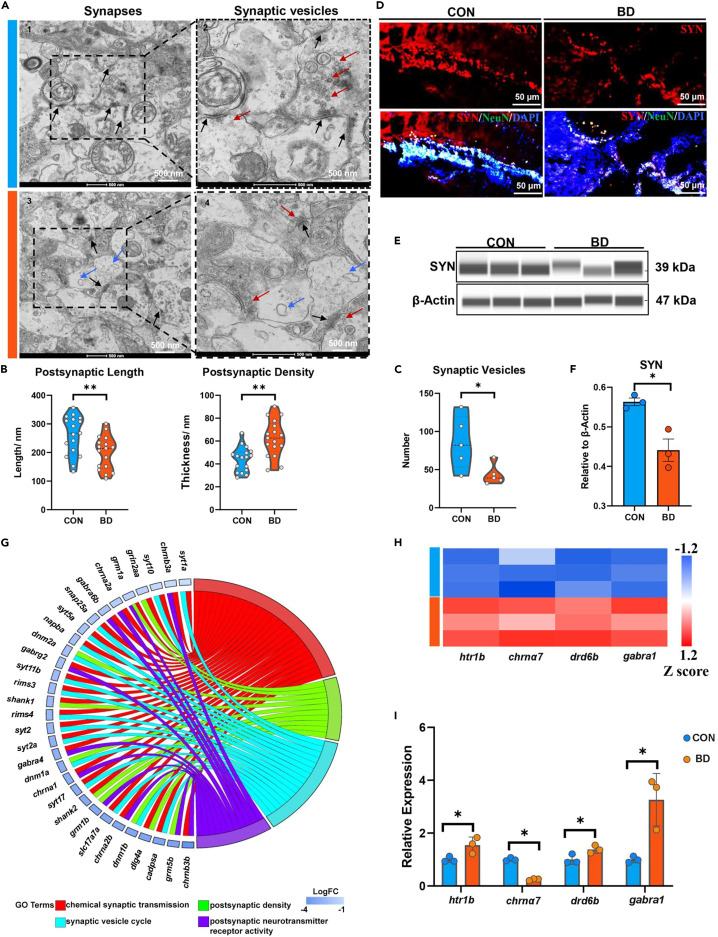Fig. 5 Synaptic damage in BD zebrafish (A) Representative electron synapses of midbrain from control and BD zebrafish (CON and BD, n = 3). Each image represents one individual subject (scale bar = 500 nm). (Black arrow, synapse; red arrow, synaptic vesicle; blue arrow, vacuolation.). (B and C) Quantitative measurements postsynaptic length, postsynaptic density (B) and synaptic vesicles (C) using ImageJ. 17 randomly selected fields of view from each sample were used to determine postsynaptic length and postsynaptic density; six randomly selected fields of view from each sample were used to determine synaptic vesicles. ∗p < 0.05, ∗∗p < 0.01, unpaired two-tailed Student’s t test. (D) Representative immunofluorescence images of midbrain after staining for SYN (synaptophysin, red), NeuN (neurons, green) and DAPI (all nuclei, blue). Scale bar = 50 μm. (E and F) Expression of SYN in CON and BD was detected by Western blot. ∗p < 0.05, unpaired two-tailed Student’s t test, data are shown as mean ± SEM. (G) Chord plot representation of 31 differentially expressed genes (FDR < 0.05) from four enriched pathways generated by the bioinformatic platform. The color map represents fold change (FC) of genes (log2 FC) and enriched pathways (chemical synaptic transmission, red; synaptic vesicle cycle, blue; postsynaptic density, green; postsynaptic neurotransmitter receptor activity, purple). (H and I) Quantitative analysis of genes regulating neurotransmitter receptor activity using transcriptome sequencing (H) and qPCR (I). chrnα7 related to cholinergic receptors; Htr1b related to serotonin receptors; drd5b related to dopamine receptors and gabra1 related to GABA receptors. ∗p < 0.05, unpaired two-tailed Student’s t test, data are shown as mean ± SEM.
Image
Figure Caption
Acknowledgments
This image is the copyrighted work of the attributed author or publisher, and
ZFIN has permission only to display this image to its users.
Additional permissions should be obtained from the applicable author or publisher of the image.
Full text @ iScience

